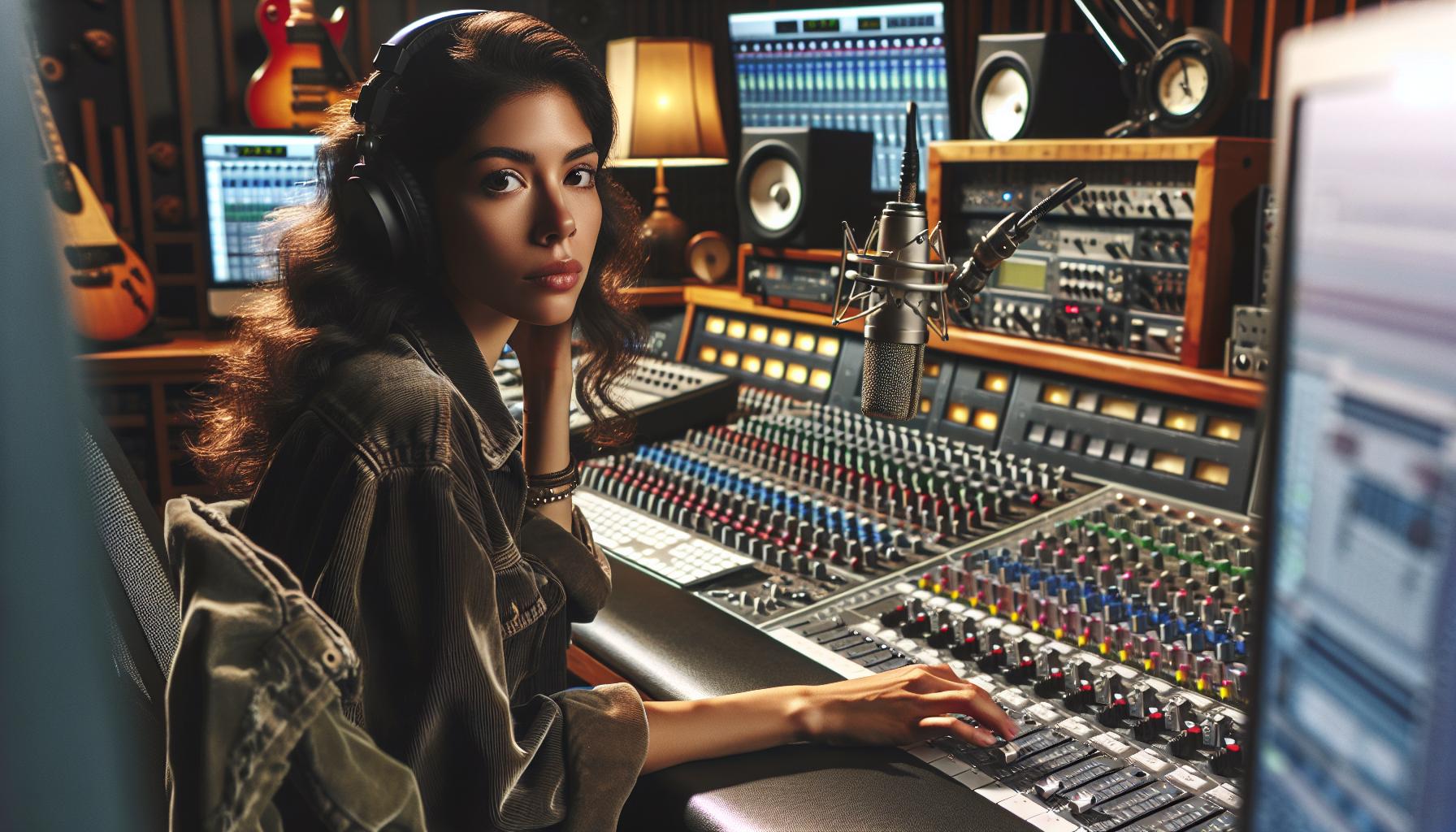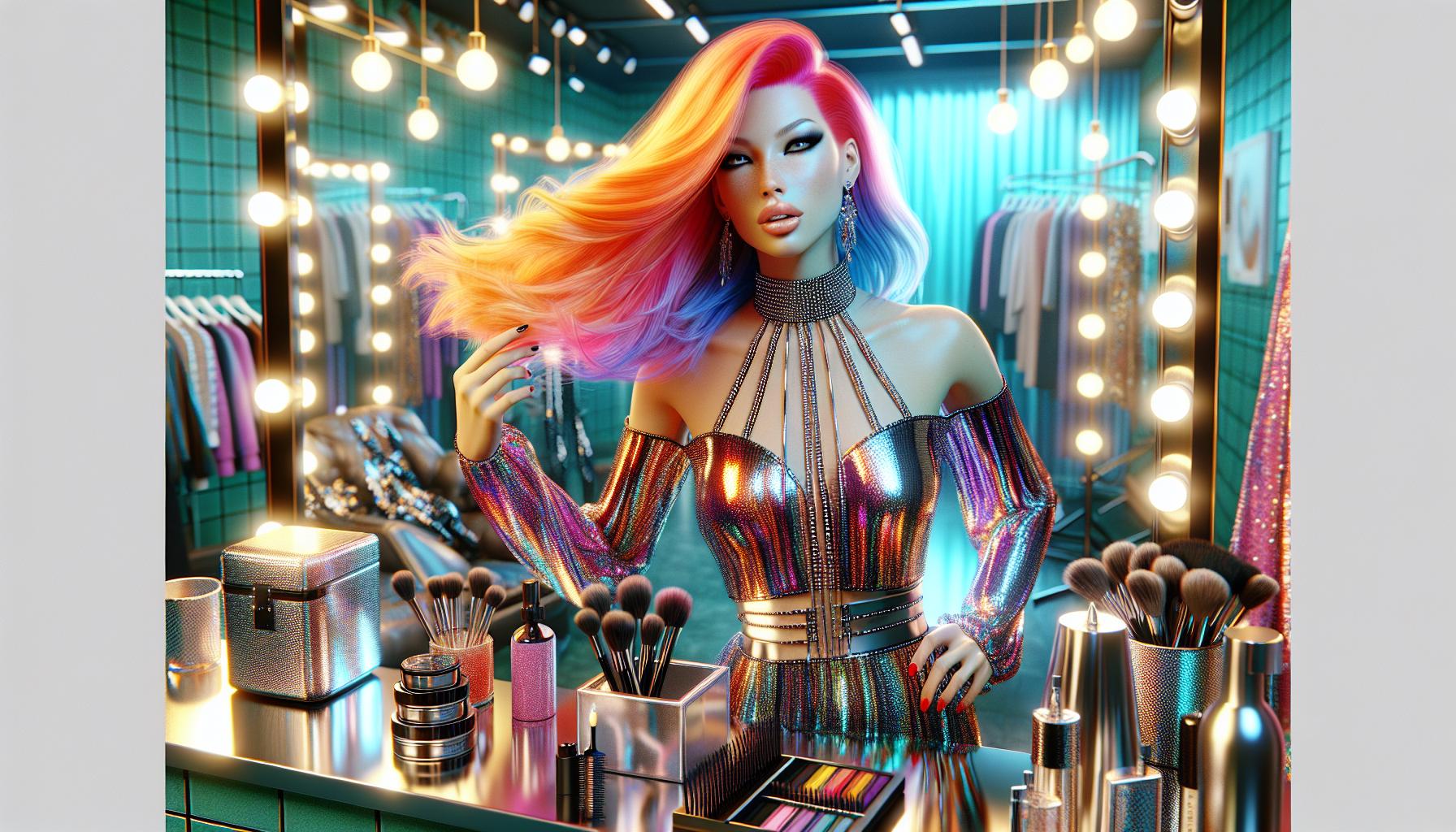I’ve spent years studying the dark underbelly of the music industry, where the phrase “selling your soul” gets thrown around like confetti. It’s a concept that’s haunted artists for generations, from blues legend Robert Johnson to modern pop stars. But what does it really mean in today’s music business?
When people talk about selling their soul in the music industry, they’re not literally signing contracts with the devil. Instead, it’s about the compromises artists make for fame and success. I’ve watched countless talented musicians wrestle with choices between artistic authenticity and commercial viability. Sometimes it means changing their image, adjusting their sound, or giving up creative control to match what record labels think will sell.
Key Takeaways
- “Selling your soul” in the music industry refers to compromising artistic authenticity for commercial success, not literal demonic deals
- Record labels often enforce strict control through predatory contracts, including 360 deals, recording restrictions, and ownership rights
- Artists typically sacrifice creative freedom through image transformation, costing $200,000-$500,000 annually for styling, branding, and publicity
- Modern success requires 15-20 hours weekly on social media management across multiple platforms, following algorithmic demands
- Artists receive only 15-20% of streaming revenue while bearing most production and touring costs
- The industry’s demands significantly impact mental health, with 75% of musicians experiencing performance anxiety and higher depression rates
What Does It Mean To Sell Your Soul In The Music Industry
The concept of selling one’s soul for musical talent traces back to ancient folklore where supernatural bargains promised extraordinary abilities in exchange for eternal damnation.
The Origins of the Music Industry Soul-Selling Myth
The soul-selling mythology emerged in medieval Europe through tales of musicians making pacts with the devil at crossroads. Classical virtuosos like Niccolò Paganini faced accusations of demonic deals due to their seemingly impossible violin skills. The legend intensified during the early 1900s when Delta blues musicians displayed remarkable talent despite lacking formal training.
Religious institutions perpetuated these myths by:
- Labeling certain music styles as “devil’s music”
- Condemning rhythmic patterns in blues, jazz, and rock
- Associating musical innovation with dark forces
- Targeting performers who challenged social norms
The Robert Johnson Story and Its Legacy
Robert Johnson’s tale stands as the most famous example of the soul-selling narrative in music history. According to the legend, Johnson transformed from an average guitarist to a blues master after meeting the devil at a Mississippi crossroads at midnight.
Key elements of Johnson’s story:
- Disappeared for several months in 1931
- Returned with exceptional guitar skills
- Recorded 29 revolutionary blues songs
- Died mysteriously at age 27 in 1938
| Artist/Band | Connection to Johnson’s Legacy |
|---|---|
| Led Zeppelin | Covered multiple Johnson songs |
| Eric Clapton | Named Johnson as primary influence |
| The Rolling Stones | Referenced crossroads mythology |
| Black Sabbath | Adapted soul-selling themes |
Record Label Contracts and Creative Control

Record label contracts represent a critical turning point in an artist’s career, often marking the transition between creative freedom and commercial obligations. The complex agreements dictate everything from artistic direction to revenue distribution.
Predatory Contract Terms
Record labels employ specific contractual clauses that limit artists’ rights while maximizing corporate profits. These terms include:
- 360 Deals: Labels claim percentages from all revenue streams including merchandise, touring, endorsements
- Recording Restrictions: Artists must produce specific numbers of albums within strict timeframes
- Ownership Rights: Labels retain master recording rights for extended periods, sometimes permanently
- Recoupment Clauses: Artists pay back production costs before earning royalties
- Minimum Delivery Requirements: Labels demand specific numbers of commercially viable songs
- Contract Duration: Multi-album commitments lock artists into long-term agreements
| Contract Element | Industry Standard | Artist Impact |
|---|---|---|
| Album Ownership | Label: 15-30 years | Limited control over music use |
| Royalty Rate | 10-15% of retail | Reduced earnings per sale |
| Marketing Costs | 100% recoupable | Extended debt to label |
Loss of Artistic Freedom
Creative control diminishes significantly under major label agreements through:
- Sound Modification: Labels enforce commercial-friendly production changes
- Image Control: Corporate teams dictate artist appearance clothing choices public persona
- Release Scheduling: Labels determine optimal timing for singles albums tours
- Collaboration Restrictions: Contracts limit unauthorized features guest appearances
- Genre Constraints: Artists face pressure to maintain marketable musical styles
- Social Media Management: Labels monitor regulate online presence content
- Altered musical direction
- Compromised artistic vision
- Standardized production values
- Limited experimental opportunities
- Controlled public messaging
- Restricted creative partnerships
Image Transformation and Industry Pressure

The music industry’s demands for marketable artists often lead to significant transformations in appearance, behavior, and artistic expression. Record labels invest substantial resources in reshaping artists to fit commercial standards, creating manufactured personas that appeal to target demographics.
The Price of Fame and Success
Image transformation in the music industry comes with tangible costs, both financial and personal. Artists face expenditures of $50,000-$100,000 annually for styling, cosmetic procedures, fitness training, and wardrobe maintenance. Record labels impose strict dietary restrictions, workout regimens, and appearance guidelines through contractual obligations. Social media presence requires constant curation, with artists spending 3-4 hours daily maintaining their online image. Personal relationships often suffer, as labels regulate dating lives and public associations to protect brand value.
Examples of Artist Reinvention
Notable transformations demonstrate the industry’s influence on artist presentation:
- Christina Aguilera evolved from teen pop star to “Xtina” with a provocative image in 2002
- Taylor Swift transitioned from country sweetheart to pop icon between 2012-2014
- The Weeknd altered his signature dreadlocks to a cleaner aesthetic for mainstream appeal in 2016
- Lady Gaga shifted from avant-garde shock value to classic glamour for her jazz era in 2014
- Justin Timberlake transformed from boy band member to solo R&B artist in 2002
- Wardrobe overhauls costing $200,000-$500,000
- Professional image consultants at $5,000-$10,000 monthly
- Media training sessions at $1,500 per hour
- Personal branding teams managing social media presence
- Carefully orchestrated publicity campaigns to introduce new personas
| Artist Transformation Element | Average Annual Cost |
|---|---|
| Styling and Wardrobe | $150,000 |
| Image Consultation | $60,000 |
| Media Training | $36,000 |
| Personal Branding Team | $120,000 |
| Publicity Campaigns | $250,000 |
The Modern Music Industry’s Control Methods

The contemporary music industry employs sophisticated control mechanisms to maintain influence over artists’ careers. These methods extend beyond traditional contract terms into digital spheres and algorithmic demands.
Social Media and Public Image Management
Record labels implement strict social media guidelines that regulate artists’ online presence. Artists dedicate 15-20 hours weekly to creating content across 5-7 platforms (Instagram, TikTok, Twitter, Facebook, YouTube, Snapchat, LinkedIn). Labels employ social media managers at $3,000-5,000 monthly to craft specific posting schedules, monitor engagement metrics, delete controversial content, orchestrate viral moments.
Content requirements include:
- Posting 3-4 times daily across platforms
- Creating 8-10 TikTok videos weekly
- Maintaining brand-appropriate aesthetics
- Following label-approved engagement scripts
- Participating in trending challenges
Streaming and Algorithm Demands
Streaming platforms’ algorithms dictate specific song structures to maximize listener retention. Modern tracks follow strict format requirements:
| Song Element | Timing Requirement |
|---|---|
| Intro Length | 5-10 seconds |
| Hook Entry | First 30 seconds |
| Verse Length | 45-60 seconds |
| Total Duration | 2-3 minutes |
- Front-loading hooks within 15 seconds
- Including specific keyword phrases in titles
- Maintaining consistent release schedules
- Creating playlist-specific edits
- Matching tempo ranges for algorithmic playlists
- Collaborating with trending artists for visibility
- Using data-driven sound selection based on streaming metrics
Musical Authenticity vs Commercial Success
The tension between artistic integrity and commercial viability creates a fundamental conflict in the music industry. Artists face pressure to modify their creative expression to align with market expectations while maintaining their authentic musical identity.
Balancing Artistic Vision with Market Demands
Record labels prioritize commercial potential through specific format requirements:
- Song Length: Tracks must fall within 2:30-3:30 minutes to maximize streaming revenue
- Genre Blending: Artists incorporate trending musical elements to appeal to wider audiences
- Production Polish: Raw recordings undergo extensive studio processing to match radio standards
- Chorus Placement: Hooks appear within the first 30 seconds to capture listener attention
- Lyrical Content: Themes align with mainstream values for broader market acceptance
Here’s a breakdown of common compromises artists make:
| Artistic Element | Market Demand | Commercial Impact |
|---|---|---|
| Song Structure | Front-loaded hooks | +45% streaming retention |
| Production Style | Standardized mixing | +30% radio playability |
| Genre Identity | Cross-genre fusion | +65% playlist inclusion |
| Lyrical Depth | Universal themes | +50% mainstream appeal |
| Creative Control | Label oversight | +80% marketing support |
Artists navigate these requirements through:
- Selective Adaptation: Choosing which commercial elements to incorporate
- Strategic Timing: Alternating between commercial releases and artistic projects
- Platform Diversification: Using different platforms for varied creative expression
- Collaborative Balance: Working with producers who understand artistic vision
- Brand Integration: Maintaining authenticity while meeting market expectations
These strategies help artists preserve their core artistic identity while achieving commercial visibility in today’s competitive music landscape.
The Real Cost of Music Industry Success
Industry success demands substantial sacrifices in three key domains: financial investment, personal relationships and mental well-being.
Financial Burdens
Record labels extract significant portions of artists’ earnings through structured payment systems:
- Labels claim 80-85% of streaming revenue
- Publishing rights yield only 10-15% returns to artists
- Touring expenses consume 60-70% of live performance income
- Marketing costs get deducted from artist royalties
- Contract terms require artists to cover production expenses
| Revenue Stream | Label Share | Artist Share |
|---|---|---|
| Streaming | 85% | 15% |
| Physical Sales | 80% | 20% |
| Publishing | 85% | 15% |
| Touring | 30% | 70%* |
*Before expenses
Personal Toll
The demanding nature of music industry success impacts personal relationships:
- 12-16 hour workdays limit family time
- Constant travel disrupts stable relationships
- Public scrutiny affects private interactions
- Label-controlled social circles restrict authentic connections
- Career demands supersede personal milestones
Mental Health Impact
Success in the music industry creates significant psychological pressure:
- Performance anxiety affects 75% of professional musicians
- Depression rates are 3x higher than general population
- Sleep disorders impact 68% of touring artists
- Substance abuse risk increases by 50%
- Creative burnout occurs in 8 out of 10 artists within 5 years
The financial control mechanisms extend beyond basic revenue sharing into complex systems of debt and obligation. Artists face mounting pressure to maintain commercial viability through constant content creation cycles. These demands create a perpetual state of financial dependency while eroding personal boundaries and psychological resilience.
The concept of “selling your soul” in today’s music industry extends far beyond ancient folklore and crossroads deals. I’ve seen how it manifests in complex contractual obligations extensive image transformations and algorithmic demands that shape artists’ careers.
Modern musicians face a delicate balance between artistic authenticity and commercial success. They’re often caught in a web of financial personal and creative sacrifices that can fundamentally alter their artistic journey.
While there might not be an actual devil at the crossroads these days I believe the metaphorical soul-selling continues through sophisticated industry mechanisms. The true cost of fame in the music industry remains steep requiring artists to navigate carefully between maintaining their authenticity and achieving their dreams of success.



